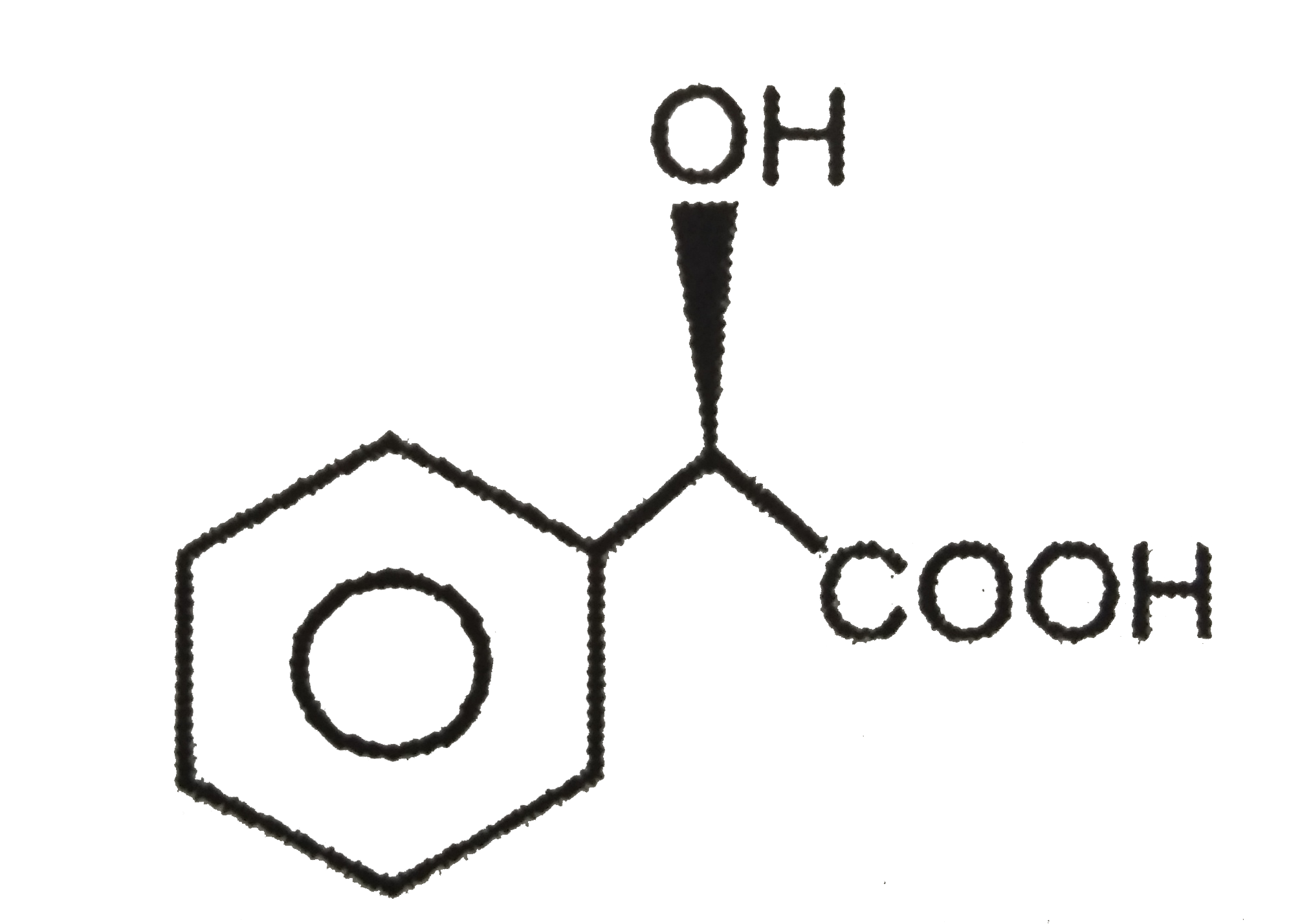A sample of optically active alcohol has a specific rotation, [α]25D, equal to +1.151∘. Specific rotation for pure form [α]25D is +5.756∘.
What is the percentage enantiomeric excess of the sample?
To find the percentage enantiomeric excess of the sample, we can use the following formula:
Percentage Enantiomeric Excess=(Observed RotationSpecific Rotation of Pure Enantiomers)×100
1. Identify the Given Values:
- Observed rotation of the sample, (α)25D=+1.151∘
- Specific rotation of the pure form, (α)25D=+5.756∘
2. Substitute the Values into the Formula:
Percentage Enantiomeric Excess=(1.1515.756)×100
3. Calculate the Fraction:
- First, calculate 1.1515.756:
1.1515.756≈0.200
4. Multiply by 100 to Get the Percentage:
0.200×100=20
5. Final Result:
- The percentage enantiomeric excess of the sample is 20%.
Summary:
The percentage enantiomeric excess of the sample is 20%.
- Observed rotation of the sample, (α)25D=+1.151∘
- Specific rotation of the pure form, (α)25D=+5.756∘
Percentage Enantiomeric Excess=(1.1515.756)×100
- First, calculate 1.1515.756:
1.1515.756≈0.200
0.200×100=20
- The percentage enantiomeric excess of the sample is 20%.
The percentage enantiomeric excess of the sample is 20%.
Topper's Solved these Questions
- ISOMERISMBOOK - CENGAGE CHEMISTRY ENGLISHCHAPTER - ISOMERISMEXERCISE - (Linked Comprehension Type)Exercise
13 Videos
- ISOMERISMBOOK - CENGAGE CHEMISTRY ENGLISHCHAPTER - ISOMERISMEXERCISE - Multiple choice questions (Exercise)
38 Videos
- ISOMERISMBOOK - CENGAGE CHEMISTRY ENGLISHCHAPTER - ISOMERISMEXERCISE - Example
15 Videos
- IONIC EQUILIBRIUMBOOK - CENGAGE CHEMISTRY ENGLISHCHAPTER - IONIC EQUILIBRIUMEXERCISE - Archives Subjective
28 Videos
- NCERT BASED EXERCISEBOOK - CENGAGE CHEMISTRY ENGLISHCHAPTER - NCERT BASED EXERCISEEXERCISE - Chemical Equilibrium
73 Videos
Similar Questions
An organic compound P exists in two enantiomeric forms, which have specific optical rotation values [α]=±100∘. The optical rotation of a mixture of these two enantiomers is −50∘. Calculate the percentage of that enantiomer which is in lower concentration in the mixture.
View SolutionCompound which rotates the plane polarised light is known as optically active compound . On the basis of direction of rotation two forms of an optically active compounds are termed as dextro and laevo rotatory . The two are termed as enantiomers . If we have a 1 : 1 mixture of d and l isomers of a given chiral compound , optical rotation of such mixture is zero Such a mixture is optically inactive and is called a recemic modification.
The net specific rotation of any mixture of the d and isomers of a given chiral compound is equal to the weighted average of the rotations due to both the isomers Mathematically if can be expressed as :
[α]≠t=fd[αd]+f1[αl]
Where fa and fl are fractions of d and l isomers respectively and [αd],[αl] are their specific rotations
The pure d isomer of certain chiral compound has
[α]25d=+55∘.A non racemic mixture of this compound has a net [α]25d=−11∘. What is the fractions of this isomer in mixture ?
View Solution
Knowledge Check
D (+) Glucose has melting point 146∘C and specific rotation [α]25D is + 112∘C. Another D(+) Glucose has melting point 150∘C and specific rotational [α]25Dis +18.7∘C. The two form have significantly different optical rotation but when an aqueous solution of either form is allowed to stand, it rotation changes. The specific rotation of one form decreases and rotation of other increases until both solution show the same value +52.7∘. The change in rotation towards an equilibrium value is called mutarotation.

What percentage of β-D-(+) glucopyranose found at equilibrium in the aqueous solution?A50%B≈100%C38%D64%D (+) Glucose has melting point 146∘C and specific rotation [α]25D is + 112∘C. Another D(+) Glucose has melting point 150∘C and specific rotational [α]25Dis +18.7∘C. The two form have significantly different optical rotation but when an aqueous solution of either form is allowed to stand, it rotation changes. The specific rotation of one form decreases and rotation of other increases until both solution show the same value +52.7∘. The change in rotation towards an equilibrium value is called mutarotation.

Mutarotation is characteristic feature of:AEpimerBEnantiomerCAnomerDRing chain isomerD (+) Glucose has melting point 146∘C and specific rotation [α]25D is + 112∘C. Another D(+) Glucose has melting point 150∘C and specific rotational [α]25Dis +18.7∘C. The two form have significantly different optical rotation but when an aqueous solution of either form is allowed to stand, it rotation changes. The specific rotation of one form decreases and rotation of other increases until both solution show the same value +52.7∘. The change in rotation towards an equilibrium value is called mutarotation.

For mannose the mutarotation can be shown in brief as follow:
 Aα-formBβ-formCopen chainDNone of these
Aα-formBβ-formCopen chainDNone of these
(R)-2-methyl-1-butanol has a specific rotation of "+13.5∘".The specific rotation of "2" - methyl-1-butanol containing "40%" of the (S)- enantiomer is
View SolutionPure cholesterol has a specific rotation of -32. A sample of cholesterol prepared in the lab has a specific rotation of -8. The enatiomeric excess of the sample of chloresterol is x%. X is :
View SolutionPure (R) Mandelic acid
 has specific rotation of 150. If a sample contains 60% of the R and 40% of its enantiomer, the [α] of his solution is.
has specific rotation of 150. If a sample contains 60% of the R and 40% of its enantiomer, the [α] of his solution is.
View SolutionThe specific rotation of a pure enantiomer is +16∘. The observed rotation, if it is isolated from a reaction with 25% racemisation and 75% inversion is
View Solution(+)-2-butanol has [θ]25γ−+13.9∘. A sample of 2-butanol containing both the enantiomers was found to have a specific rotation value of −3.5∘ under similar condition. The percentage of the (+) and (-) enantiomer present in the sample are, respectively :
View Solution
